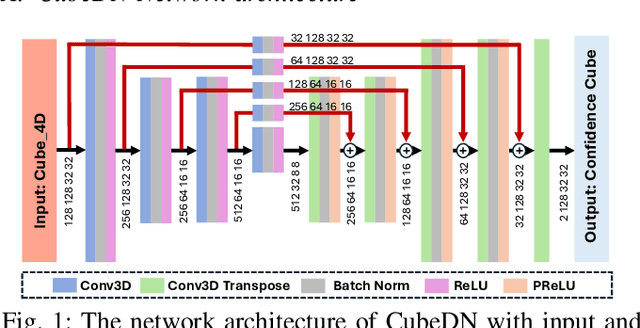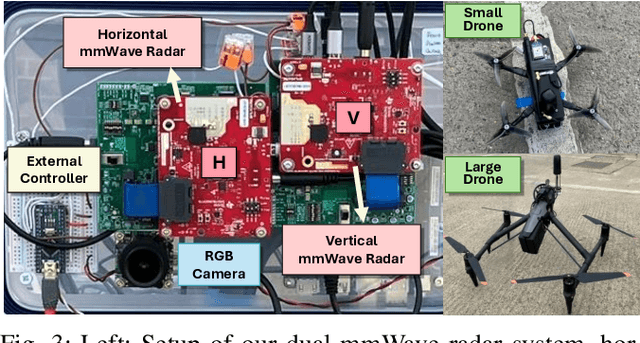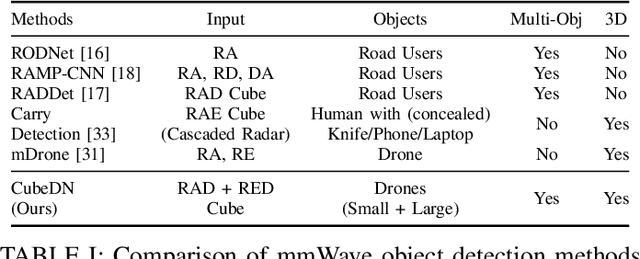Yuan Fang
Unified Molecule Pre-training with Flexible 2D and 3D Modalities: Single and Paired Modality Integration
Oct 08, 2025Abstract:Molecular representation learning plays a crucial role in advancing applications such as drug discovery and material design. Existing work leverages 2D and 3D modalities of molecular information for pre-training, aiming to capture comprehensive structural and geometric insights. However, these methods require paired 2D and 3D molecular data to train the model effectively and prevent it from collapsing into a single modality, posing limitations in scenarios where a certain modality is unavailable or computationally expensive to generate. To overcome this limitation, we propose FlexMol, a flexible molecule pre-training framework that learns unified molecular representations while supporting single-modality input. Specifically, inspired by the unified structure in vision-language models, our approach employs separate models for 2D and 3D molecular data, leverages parameter sharing to improve computational efficiency, and utilizes a decoder to generate features for the missing modality. This enables a multistage continuous learning process where both modalities contribute collaboratively during training, while ensuring robustness when only one modality is available during inference. Extensive experiments demonstrate that FlexMol achieves superior performance across a wide range of molecular property prediction tasks, and we also empirically demonstrate its effectiveness with incomplete data. Our code and data are available at https://github.com/tewiSong/FlexMol.
MolGA: Molecular Graph Adaptation with Pre-trained 2D Graph Encoder
Oct 08, 2025Abstract:Molecular graph representation learning is widely used in chemical and biomedical research. While pre-trained 2D graph encoders have demonstrated strong performance, they overlook the rich molecular domain knowledge associated with submolecular instances (atoms and bonds). While molecular pre-training approaches incorporate such knowledge into their pre-training objectives, they typically employ designs tailored to a specific type of knowledge, lacking the flexibility to integrate diverse knowledge present in molecules. Hence, reusing widely available and well-validated pre-trained 2D encoders, while incorporating molecular domain knowledge during downstream adaptation, offers a more practical alternative. In this work, we propose MolGA, which adapts pre-trained 2D graph encoders to downstream molecular applications by flexibly incorporating diverse molecular domain knowledge. First, we propose a molecular alignment strategy that bridge the gap between pre-trained topological representations with domain-knowledge representations. Second, we introduce a conditional adaptation mechanism that generates instance-specific tokens to enable fine-grained integration of molecular domain knowledge for downstream tasks. Finally, we conduct extensive experiments on eleven public datasets, demonstrating the effectiveness of MolGA.
DF-LLaVA: Unlocking MLLM's potential for Synthetic Image Detection via Prompt-Guided Knowledge Injection
Sep 18, 2025Abstract:With the increasing prevalence of synthetic images, evaluating image authenticity and locating forgeries accurately while maintaining human interpretability remains a challenging task. Existing detection models primarily focus on simple authenticity classification, ultimately providing only a forgery probability or binary judgment, which offers limited explanatory insights into image authenticity. Moreover, while MLLM-based detection methods can provide more interpretable results, they still lag behind expert models in terms of pure authenticity classification accuracy. To address this, we propose DF-LLaVA, a simple yet effective framework that unlocks the intrinsic discrimination potential of MLLMs. Our approach first extracts latent knowledge from MLLMs and then injects it into training via prompts. This framework allows LLaVA to achieve outstanding detection accuracy exceeding expert models while still maintaining the interpretability offered by MLLMs. Extensive experiments confirm the superiority of our DF-LLaVA, achieving both high accuracy and explainability in synthetic image detection. Code is available online at: https://github.com/Eliot-Shen/DF-LLaVA.
CubeDN: Real-time Drone Detection in 3D Space from Dual mmWave Radar Cubes
Aug 25, 2025



Abstract:As drone use has become more widespread, there is a critical need to ensure safety and security. A key element of this is robust and accurate drone detection and localization. While cameras and other optical sensors like LiDAR are commonly used for object detection, their performance degrades under adverse lighting and environmental conditions. Therefore, this has generated interest in finding more reliable alternatives, such as millimeter-wave (mmWave) radar. Recent research on mmWave radar object detection has predominantly focused on 2D detection of road users. Although these systems demonstrate excellent performance for 2D problems, they lack the sensing capability to measure elevation, which is essential for 3D drone detection. To address this gap, we propose CubeDN, a single-stage end-to-end radar object detection network specifically designed for flying drones. CubeDN overcomes challenges such as poor elevation resolution by utilizing a dual radar configuration and a novel deep learning pipeline. It simultaneously detects, localizes, and classifies drones of two sizes, achieving decimeter-level tracking accuracy at closer ranges with overall $95\%$ average precision (AP) and $85\%$ average recall (AR). Furthermore, CubeDN completes data processing and inference at 10Hz, making it highly suitable for practical applications.
Graph Positional Autoencoders as Self-supervised Learners
May 29, 2025Abstract:Graph self-supervised learning seeks to learn effective graph representations without relying on labeled data. Among various approaches, graph autoencoders (GAEs) have gained significant attention for their efficiency and scalability. Typically, GAEs take incomplete graphs as input and predict missing elements, such as masked nodes or edges. While effective, our experimental investigation reveals that traditional node or edge masking paradigms primarily capture low-frequency signals in the graph and fail to learn the expressive structural information. To address these issues, we propose Graph Positional Autoencoders (GraphPAE), which employs a dual-path architecture to reconstruct both node features and positions. Specifically, the feature path uses positional encoding to enhance the message-passing processing, improving GAE's ability to predict the corrupted information. The position path, on the other hand, leverages node representations to refine positions and approximate eigenvectors, thereby enabling the encoder to learn diverse frequency information. We conduct extensive experiments to verify the effectiveness of GraphPAE, including heterophilic node classification, graph property prediction, and transfer learning. The results demonstrate that GraphPAE achieves state-of-the-art performance and consistently outperforms baselines by a large margin.
HeTGB: A Comprehensive Benchmark for Heterophilic Text-Attributed Graphs
Mar 05, 2025Abstract:Graph neural networks (GNNs) have demonstrated success in modeling relational data primarily under the assumption of homophily. However, many real-world graphs exhibit heterophily, where linked nodes belong to different categories or possess diverse attributes. Additionally, nodes in many domains are associated with textual descriptions, forming heterophilic text-attributed graphs (TAGs). Despite their significance, the study of heterophilic TAGs remains underexplored due to the lack of comprehensive benchmarks. To address this gap, we introduce the Heterophilic Text-attributed Graph Benchmark (HeTGB), a novel benchmark comprising five real-world heterophilic graph datasets from diverse domains, with nodes enriched by extensive textual descriptions. HeTGB enables systematic evaluation of GNNs, pre-trained language models (PLMs) and co-training methods on the node classification task. Through extensive benchmarking experiments, we showcase the utility of text attributes in heterophilic graphs, analyze the challenges posed by heterophilic TAGs and the limitations of existing models, and provide insights into the interplay between graph structures and textual attributes. We have publicly released HeTGB with baseline implementations to facilitate further research in this field.
Reactive Diffusion Policy: Slow-Fast Visual-Tactile Policy Learning for Contact-Rich Manipulation
Mar 04, 2025Abstract:Humans can accomplish complex contact-rich tasks using vision and touch, with highly reactive capabilities such as quick adjustments to environmental changes and adaptive control of contact forces; however, this remains challenging for robots. Existing visual imitation learning (IL) approaches rely on action chunking to model complex behaviors, which lacks the ability to respond instantly to real-time tactile feedback during the chunk execution. Furthermore, most teleoperation systems struggle to provide fine-grained tactile / force feedback, which limits the range of tasks that can be performed. To address these challenges, we introduce TactAR, a low-cost teleoperation system that provides real-time tactile feedback through Augmented Reality (AR), along with Reactive Diffusion Policy (RDP), a novel slow-fast visual-tactile imitation learning algorithm for learning contact-rich manipulation skills. RDP employs a two-level hierarchy: (1) a slow latent diffusion policy for predicting high-level action chunks in latent space at low frequency, (2) a fast asymmetric tokenizer for closed-loop tactile feedback control at high frequency. This design enables both complex trajectory modeling and quick reactive behavior within a unified framework. Through extensive evaluation across three challenging contact-rich tasks, RDP significantly improves performance compared to state-of-the-art visual IL baselines through rapid response to tactile / force feedback. Furthermore, experiments show that RDP is applicable across different tactile / force sensors. Code and videos are available on https://reactive-diffusion-policy.github.io/.
Separated Contrastive Learning for Matching in Cross-domain Recommendation with Curriculum Scheduling
Feb 22, 2025



Abstract:Cross-domain recommendation (CDR) is a task that aims to improve the recommendation performance in a target domain by leveraging the information from source domains. Contrastive learning methods have been widely adopted among intra-domain (intra-CL) and inter-domain (inter-CL) users/items for their representation learning and knowledge transfer during the matching stage of CDR. However, we observe that directly employing contrastive learning on mixed-up intra-CL and inter-CL tasks ignores the difficulty of learning from inter-domain over learning from intra-domain, and thus could cause severe training instability. Therefore, this instability deteriorates the representation learning process and hurts the quality of generated embeddings. To this end, we propose a novel framework named SCCDR built up on a separated intra-CL and inter-CL paradigm and a stop-gradient operation to handle the drawback. Specifically, SCCDR comprises two specialized curriculum stages: intra-inter separation and inter-domain curriculum scheduling. The former stage explicitly uses two distinct contrastive views for the intra-CL task in the source and target domains, respectively. Meanwhile, the latter stage deliberately tackles the inter-CL tasks with a curriculum scheduling strategy that derives effective curricula by accounting for the difficulty of negative samples anchored by overlapping users. Empirical experiments on various open-source datasets and an offline proprietary industrial dataset extracted from a real-world recommender system, and an online A/B test verify that SCCDR achieves state-of-the-art performance over multiple baselines.
Bridging Domain Gaps between Pretrained Multimodal Models and Recommendations
Feb 21, 2025Abstract:With the explosive growth of multimodal content online, pre-trained visual-language models have shown great potential for multimodal recommendation. However, while these models achieve decent performance when applied in a frozen manner, surprisingly, due to significant domain gaps (e.g., feature distribution discrepancy and task objective misalignment) between pre-training and personalized recommendation, adopting a joint training approach instead leads to performance worse than baseline. Existing approaches either rely on simple feature extraction or require computationally expensive full model fine-tuning, struggling to balance effectiveness and efficiency. To tackle these challenges, we propose \textbf{P}arameter-efficient \textbf{T}uning for \textbf{M}ultimodal \textbf{Rec}ommendation (\textbf{PTMRec}), a novel framework that bridges the domain gap between pre-trained models and recommendation systems through a knowledge-guided dual-stage parameter-efficient training strategy. This framework not only eliminates the need for costly additional pre-training but also flexibly accommodates various parameter-efficient tuning methods.
GCoT: Chain-of-Thought Prompt Learning for Graphs
Feb 12, 2025Abstract:Chain-of-thought (CoT) prompting has achieved remarkable success in natural language processing (NLP). However, its vast potential remains largely unexplored for graphs. This raises an interesting question: How can we design CoT prompting for graphs to guide graph models to learn step by step? On one hand, unlike natural languages, graphs are non-linear and characterized by complex topological structures. On the other hand, many graphs lack textual data, making it difficult to formulate language-based CoT prompting. In this work, we propose the first CoT prompt learning framework for text-free graphs, GCoT. Specifically, we decompose the adaptation process for each downstream task into a series of inference steps, with each step consisting of prompt-based inference, ``thought'' generation, and thought-conditioned prompt learning. While the steps mimic CoT prompting in NLP, the exact mechanism differs significantly. Specifically, at each step, an input graph, along with a prompt, is first fed into a pre-trained graph encoder for prompt-based inference. We then aggregate the hidden layers of the encoder to construct a ``thought'', which captures the working state of each node in the current step. Conditioned on this thought, we learn a prompt specific to each node based on the current state. These prompts are fed into the next inference step, repeating the cycle. To evaluate and analyze the effectiveness of GCoT, we conduct comprehensive experiments on eight public datasets, which demonstrate the advantage of our approach.
 Add to Chrome
Add to Chrome Add to Firefox
Add to Firefox Add to Edge
Add to Edge